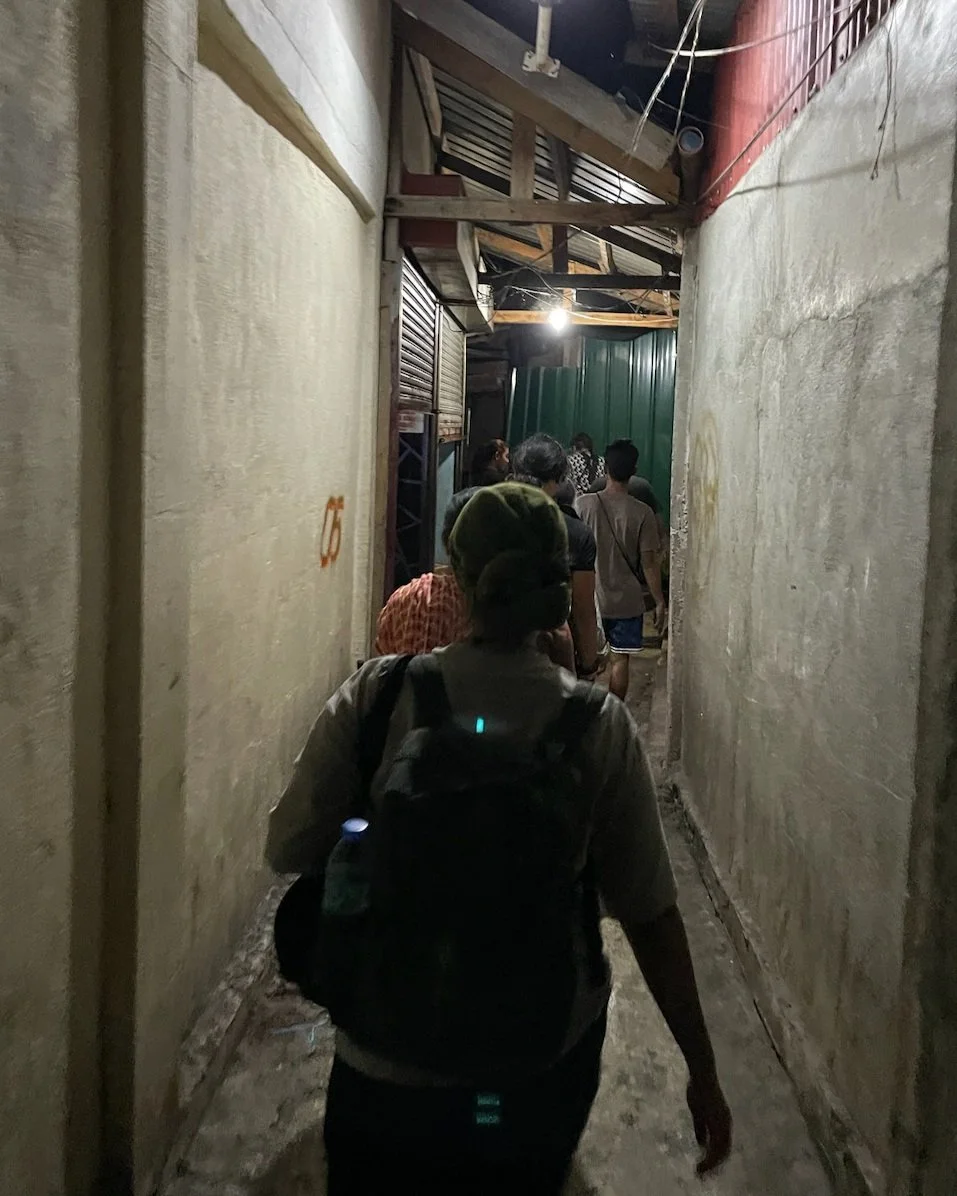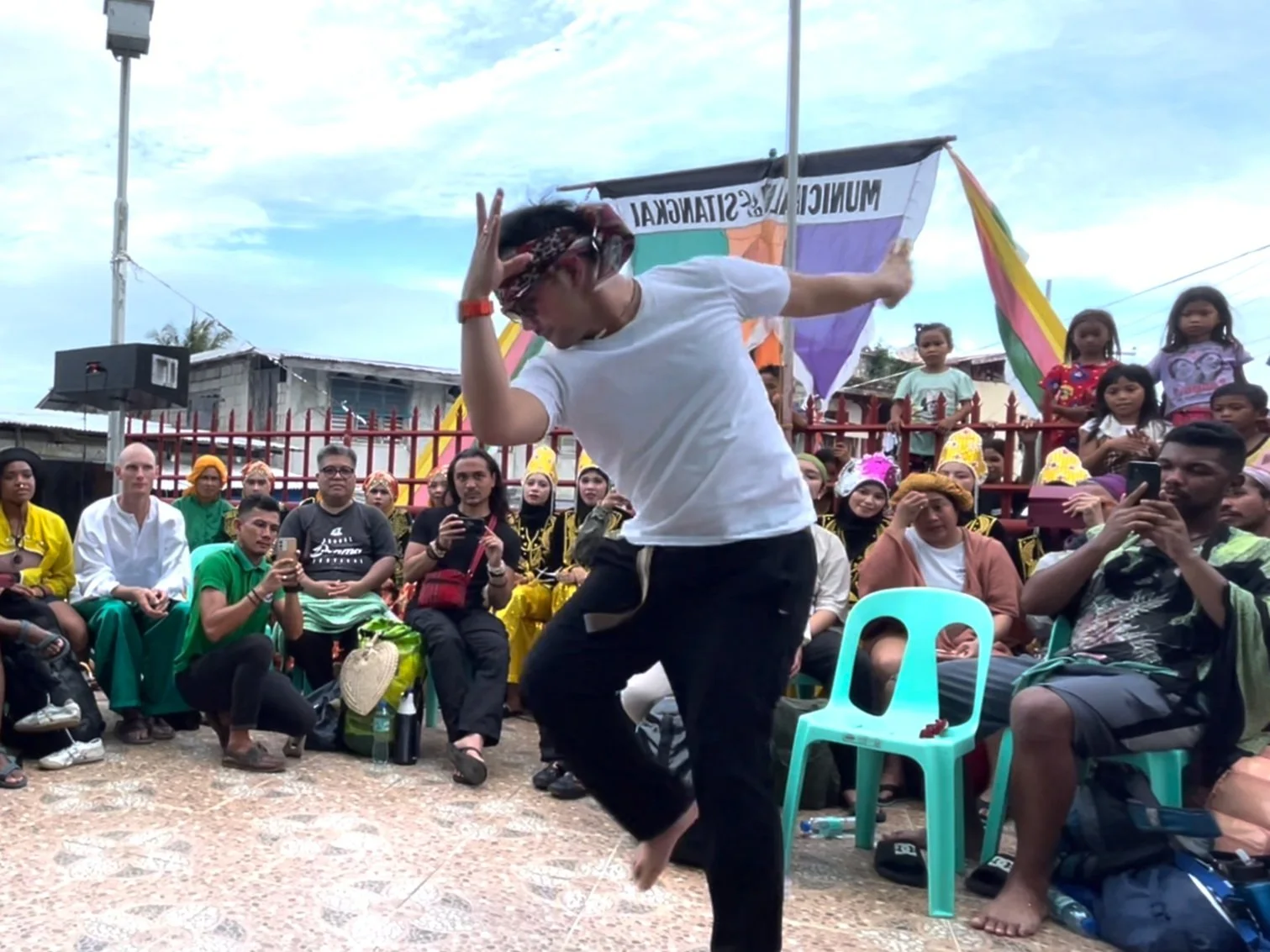Memories of Mindanao, Part 4
By Conrad J. Benedicto
I have no personal experience with spirits. As a child I was quite fascinated by and fearful of otherworldly beings. Throughout my life, the fear in particular has faded due to a complete lack of objectively verifiable encounters. But on one starlit evening in Sitangkai, my wonder was rekindled when I witnessed a ritual dance that I believe was as close to an otherworldly encounter as I will ever have.
That night our inestimable guide, Raffy, led us past the concrete walkways above water to the edge of the settlement where all the homes stood on traditional stilts. We carefully made our way from dwelling to dwelling on wooden planks until we came upon a large wood and bamboo platform in the middle of the community. Below us, the waters increased with the coming tide. The ocean breeze was a quiet whisper in the dark.
“The melodies borne by interlocking percussion drew in the vastness of ocean and sky as they floated up into the dusk.”
We came to witness a community ceremony called the Igal Djinn. Igal is the name of the traditional dance that greeted us at every stop so far in our journey through this province. In the United States it might be recognized as pangalay, a graceful dance that echoes the movements of nature and water. The dancers wear the curves of the janggai, golden fingernails, on their hands. Igal Djinn is a healing version in which the dancers are possessed by benevolent spirits. These dancers are then able to bring healing to community members in attendance, whether these ills are physical, emotional, or spiritual.
Surrounding the center of this rickety platform, over two hundred Sama men, women, and children sat cross legged, come to bear witness to the event. The members of the KULARTS tour were dispersed amongst them, some seated on rugs laid down on the floor, others, like me, standing on the edges by the outer wall of the surrounding houses. Farther out from the ceremonial circle lay the vast ocean surrounding our tiny little island, and beyond that still was the glittering dome of the cosmos.
The ceremony began with an old woman playing the kulintang, accompanied by younger musicians on the drum and agong. In what became an obvious precursor for things to come, the music was technically brilliant while befitting our setting perfectly. The melodies borne by interlocking percussion drew in the vastness of ocean and sky as they floated up into the dusk. Then the Igal dancers emerged from the nearest dwelling and began. All of them, both men and women, were taken over by the spirits, their graceful movements suddenly interrupted by a fall or a sudden stillness. Then they would dance near or with individuals who needed healing, or reenact and resolve through dance a conflict within the community.
Everyone present seemed in agreement that the Igal Djinn dancers were being possessed. But it wasn’t in the wide-eyed awestruck way that a foreigner from the United States might imagine, as if a miracle was happening. The people present agreed to what was happening rather like how we Americans might agree that when a doctor starts doctoring, or a lawyer starts lawyering, something medical or legal is happening. The dancers had a role to fulfill for a community ritual and they were simply playing their parts. And if I read the room correctly, so to speak, it seemed that there were also quite a few skeptics among the locals as well, who, like me, were not convinced that actual spirit possession was transpiring. Although the ceremony did feel sacrosanct, it wasn’t otherworldly.
Then the Purple Woman came out.
She was middle aged and wiry in her purple sawal (pants), patadjuk (headdress), and tawi (blouse). Her movements were of a seasoned and sure footed veteran at the height of her powers, like Megan Rapinoe circa 2019 on the pitch. That night she attained spiritual heights, completely engaged, and committed to her part as an actor in this communal play. It was incredible to witness a perfect melding of movement and music within the context of a communal ritual. To ask whether or not an actual spirit had possessed her or if it was merely an instance of artistic transcendence is moot, really. She attained the divine. It is impossible to describe what it was like but I did my best:
Ritual Dancer
eyes inward seeking
glistening portals for moonless night
spirits gathering
pass into, through
her procession of movements in time
the float of gong-runes bearing her
each bend each arc and turn
of phrase of night breeze of stars
beyond time
sinew and soul heart
in weightless effort
the World shifts
constellations swirl around Her
in rhythm with her part
as Vessel
that the gathered spirits might witness
their stories made flesh
Al-raffy Harun, Tawi-Tawi guide.
Naturally, I could not stop blabbing about “The Purple Woman'' the next day, and it turns out that our affable but imperturbable guide, Raffy, was also “shook” or in Pilipino slang, made “kilig to the bones” by her because Raffy knows everyone in Sitangkai and—get this—HE HAD NO IDEA WHO THAT WOMAN WAS. Also we never saw her again.
All epic journeys include events that take on mythological qualities in the mind of its participants. This one had a little mystery sprinkled on top of a transcendent act. Our very own folktale from this trip.
Conrad J. Benedicto
A teacher, author, and kulintang musician who studied with Master Danongan Kalanduyan from 1997 to 2016. He was Master Kalanduyan’s apprentice within the Alliance for California Traditional Arts’ Apprenticeship Program in 2007 and again in 2013. He founded and leads the Kulintang band, Kulitang Dialect, and has performed at the Filipino American International Book Fest Gala, Gongster’s Paradise Kulintang Festival, SF Parol Lantern Festival, and more. He has received grants for his music from the San Francisco Arts Commission and Zellerbach Family Foundation. He teaches social studies, environmental education, and kulintang music at Balboa High School in San Francisco.
Publications:
Musalaya’s Gift, Youth Fantasy Novel
The Warriors of Dagad Pass by Bumbakal Saksi, Musalaya’s Gift Graphic Companion Book








